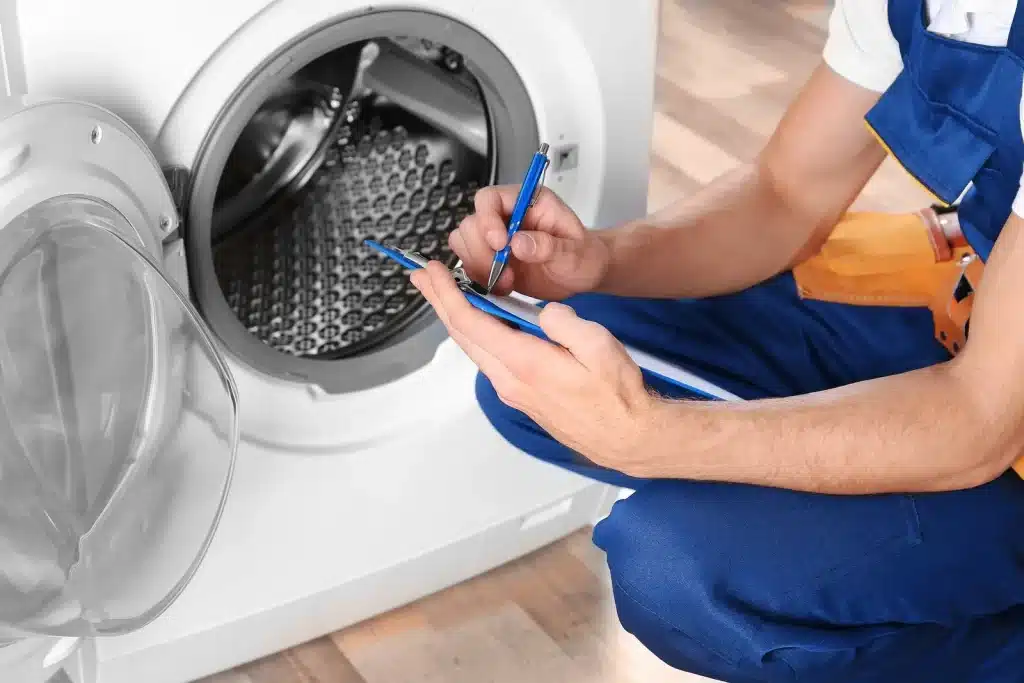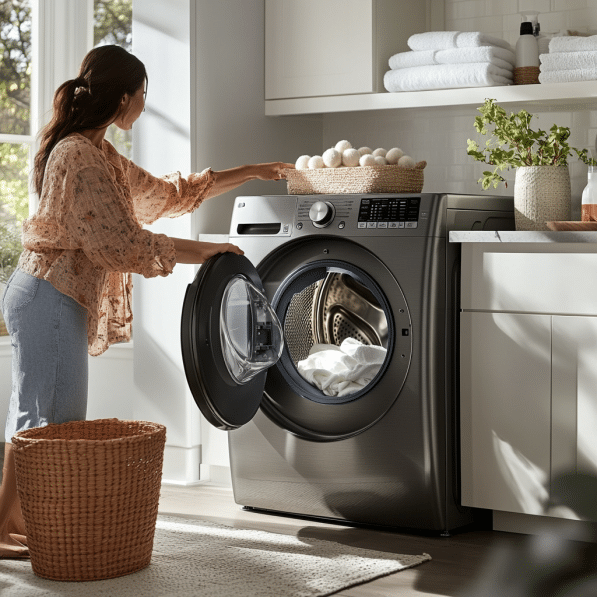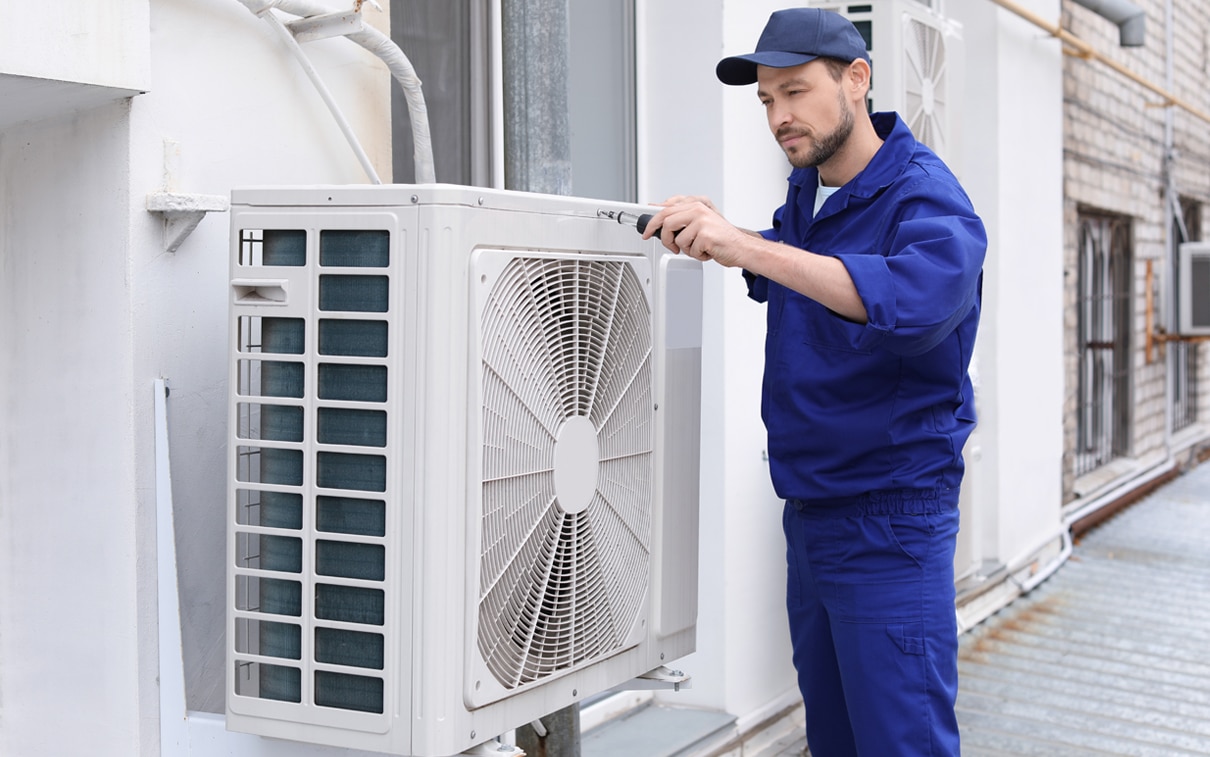Secrets to Dryer Efficiency: Performance Improvement and Ways to Save on Energy Costs
Imagine this: You are binge-watching your favorite series on Netflix, wherein stories about how people reach peak performance inspire you. What if I told you that your home appliances could reach their peak—most especially, your dryer—with the right strategies?
Just like those motivational shows that show you how to unleash your personal best, so too can your dryer be tuned up to operate more efficiently, save you money on energy bills, and make your laundry chore easier and quicker.
Welcome to “Dryer Repair Efficiency Secrets,” where we are going to show you how to make your dryer do a better job, use less energy, and keep everything running in your household like an action-packed box office movie. Are you ready for your dryer to be the MVP of your home? Let’s get into it.
The Surprising Impact of Dryer Efficiency

You probably don’t give much thought to your dryer until it stops working, but how well you maintain your appliance can make a great difference in your home’s energy use and efficiency. But did you know that dryers are among the most power-consuming appliances in the house?
According to the U.S. Department of Energy, they account for an average of about 6% of a home’s total electricity use—that’s more than your refrigerator, washing machine, and dishwasher all put together!
By increasing your dryer efficiency, you will save not only energy but also reduce your utility bills. Moreover, this appliance will serve you longer. Here are some tips—easy to follow, yet effective—that will enable you to maintain your dryer in perfect working condition.
Tips and Tricks to Enhance the Performance and Efficiency of a Dryer
1. Clean the Lint Filter Regularly – The Basic Habit That Pays Off
Consider your dryer’s lint filter like the clutter of life—if you don’t clean it out, it starts to clog. A clogged filter reduces airflow and causes your dryer to work harder and longer to dry clothes.
- How It’s Done: Clean the lint filter after each use. This simple task takes literally a few seconds, but it will make your dryer work up to 30 percent more efficiently.
- Pro Tip: Don’t just stop at the filter—clean it once a month with warm soapy water and a soft brush to remove any residue from dryer sheets or fabric softeners that might be constricting airflow.
2. Keep the Dryer Vent Clean – Breathe Easier, Dry Faster
The clothes dryer vent is the path the hot, moist air takes to leave your home. When that vent is restricted in any fashion, it may make the drying time longer and/or make the dryer hotter than normal, which increases energy consumption but also can cause a fire hazard.
- How to Do It: At least twice a year, check that your dryer vent is clear of lint or other debris, using either a vacuum or a brush to remove it.
- Pro Tip: The DIYers among you know the often tedious task of cleaning vents is made a bit easier and more complete with specialized vent-cleaning kits.
3. Check the Exhaust Duct – The Lifeline of Your Dryer’s Efficiency
Your dryer’s exhaust duct is one of the more critical things to ensure proper airflow in your appliance. A crimped or clogged duct reduces efficiency and may lead to your dryer overheating.
- How to Do It: Check the dryer’s exhaust duct behind the dryer for kinking or crushing. Replace flexible plastic ducts easily, as well as blockage, so you might want to replace them with rigid or semi-rigid metal ducting.
- Pro tip: Keep the duct as short and straight as possible. The fewer bends in the duct, the better the airflow and efficiency.
4. Load Smartly – Size and Type Matter
Loading your dryer with clothes might seem pretty straightforward, but there is actually a science behind it. Forcing too much into your dryer, or mixing fabrics that have various drying rates, can reduce its efficiency.
- How to Do It: Target medium-sized loads. Overloading the dryer leads to clothes clumping together, stopping air from circulating freely. On the opposite end of the spectrum, running a single towel through a cycle is a waste of energy.
- Pro Tip: Separate your laundry into fabric types and dry heavy items, such as towels, separately from lighter-weight clothes to achieve even drying. You can also save energy by choosing the right heat for each load.
5. Use Dryer Balls – The Secret Weapon for Speedy Drying
Dryer balls are an inexpensive and eco-friendly way to cut drying time and enhance efficiency. They allow better hot air circulation by separating clothes.
- How to Do It: Toss a few in with each load. Your wool or rubber balls will pick up and separate the clothes to reduce as much as 25% of drying time.
- Pro Tip: A few drops of favorite essential oils added to wool dryer balls give a fresh, natural fragrance to clothes without using chemical-laden dryer sheets.
6. Upgrade to a High-Efficiency Dryer – The Big Picture Investment
If your dryer is more than 10-15 years old, it may be time to get a replacement. Newer models bearing the Energy Star rating consume up to 20 percent less energy compared to their conventional counterparts. They often come with moisture sensors, which help prevent over-drying.
- How to Do It: Look for a high-efficiency model that combines advanced moisture sensors with cool-down and multiple drying option choices for different fabric types.
- Pro Tip: Consider a heat pump dryer that uses less energy by re-circulating air. Although pricier, it can certainly save you a lot in energy over time.
Maintenance Practices That Make a Difference
Regular maintenance is what will keep your dryer at its best. Here’s a quick checklist to make sure your dryer continues to be both efficient and effective:
- Deep Clean Once a Year: This includes unplugging your dryer, taking off the back panel of the dryer, and vacuuming any dust or lint from around the drum, motor, and other components.
- Seal and Gasket Inspection: Check seals around your doors for wear and tear. If they are damaged, you invite hot air to escape and make things less efficient.
- Test the Temperature of the Dryer: To check the temperature inside the drum of one cycle, use an oven thermometer. If the temperature is either too high or too low, it could signify a problem with either the thermostat or the heating element that needs repair.
When to Call in the Experts for Dryer Repair

Even with the best care, dryers can have some problems that require the care of professionals. Here’s when you should seek the services of a dryer repair expert:
- Weird Noises: A dryer that makes squeaking, grinding, or thumping noises may well mean that parts are worn out, such as drum bearings or belts.
- Long drying times: If clothes are taking longer to dry than usual, with all efficiency tips, then you require a professional to check the internal blockages or failures in the mechanical system.
- Overheating: When your dryer feels extremely hot to the touch, or there’s a burning smell, you should immediately disconnect it from power. This is a potential serious safety hazard; hence, always call a repair technician.
Your dryer is that independent film that gets great reviews but nobody sees: it works behind the scenes, quietly doing its job, and really deserves a standing ovation. Employ these Dryer Efficiency Secrets—regular maintenance, smart loading techniques, and strategic upgrades—to ensure that it will perform superbly every time while keeping energy costs in check.
Consider these little adjustments as the necessary plot turns toward a better and more efficient home. So, be it tuning into the next big Netflix hit or just surviving laundry day, with a little TLC, know that your dryer can run like a star performer. To a smoother, quieter, and more efficient life at home—because every great story begins with the right tools!







